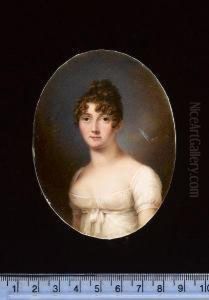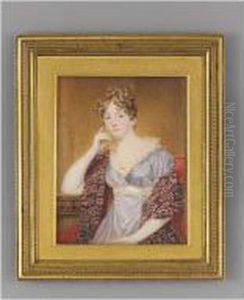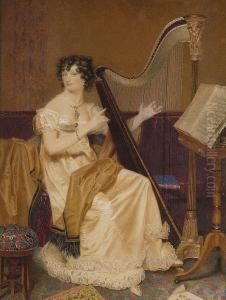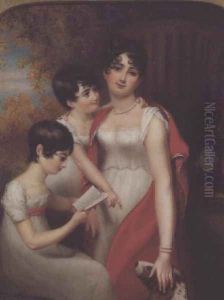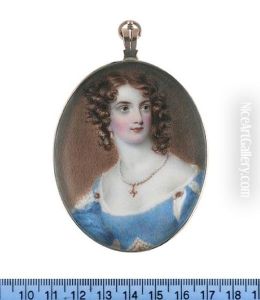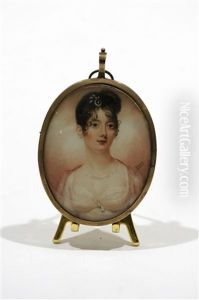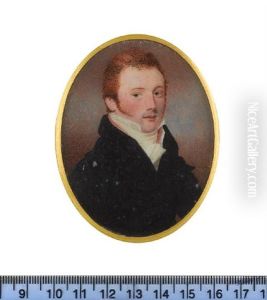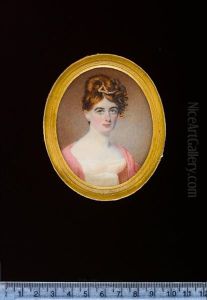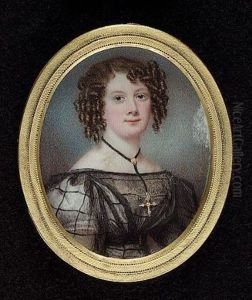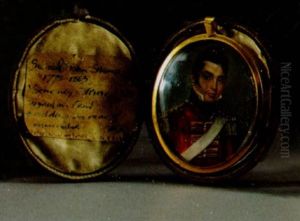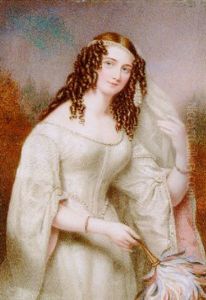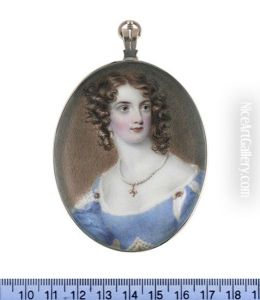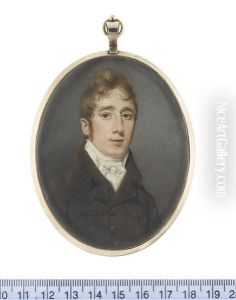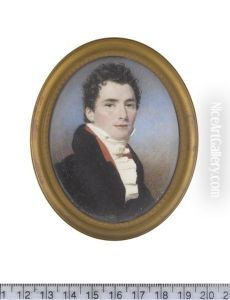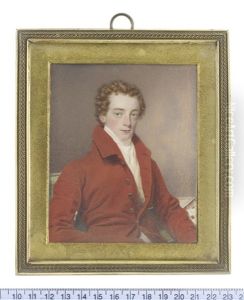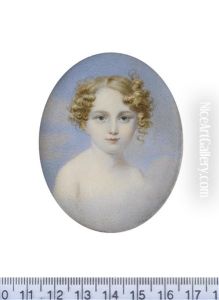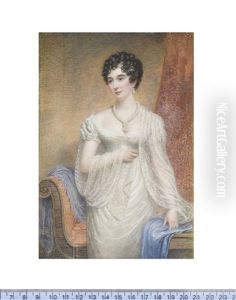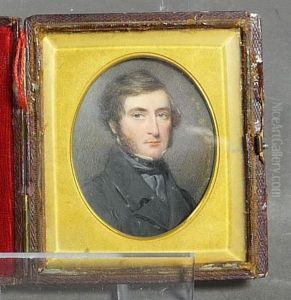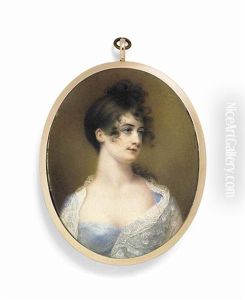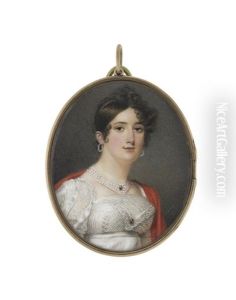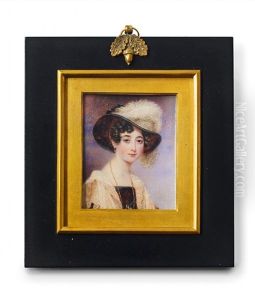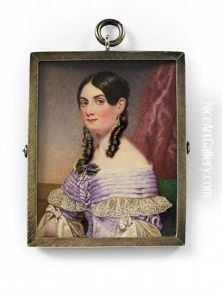Samuel John Stump Paintings
Samuel John Stump was an English painter and miniaturist, born in 1778, recognized for his contributions to portrait and miniature painting during the late 18th and early 19th centuries. Stump's work spanned a critical period in British art, coinciding with the Regency and Victorian eras, times of significant social, political, and cultural transformation in the UK. Despite the lack of extensive documentation on his personal life, Stump's legacy is preserved through his artistic output and contributions to the period's visual culture.
Stump's artistic journey began in an era where miniature painting was highly valued for personal mementos and as a means to capture the likenesses of the burgeoning middle class, as well as the aristocracy. He was known for his adeptness in watercolor on ivory, a popular medium for miniatures, but was also skilled in larger portrait works. His style combined meticulous detail with a softness and sensitivity that captured more than just the physical likeness of his subjects, aiming to also encapsulate their personality and status.
Throughout his career, Stump exhibited at prestigious institutions such as the Royal Academy, where his works were showcased alongside those of his contemporaries, contributing to the era's rich tapestry of visual arts. His ability to adapt to the changing tastes of the art market and to employ innovative techniques in his miniatures and portraits allowed him to maintain a successful career over several decades.
Despite his death in 1863, Samuel John Stump's works continue to be of interest to collectors and historians. His portraits and miniatures offer a window into the faces and fashions of a bygone era, capturing the essence of the Regency and early Victorian periods with a unique blend of accuracy and artistry. Stump's contribution to the development of miniature painting and his role in the broader narrative of British art history remain significant, highlighting his status as a noteworthy figure in the rich landscape of 19th-century English art.

